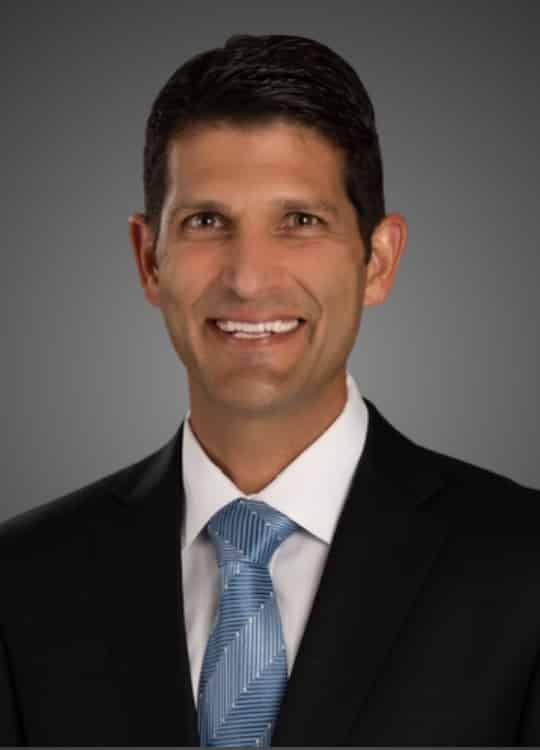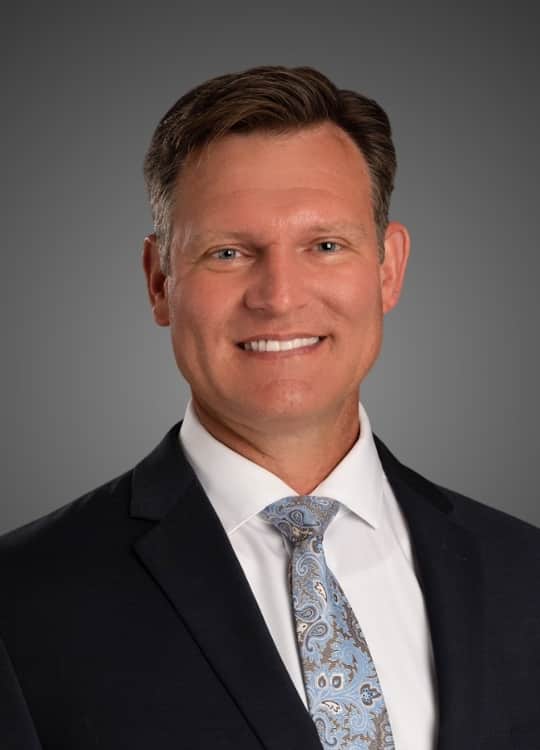Elbow Replacement
Elbow replacement surgery removes damaged areas of the elbow joint and replaces them with parts made of metal and plastic (implants).
The anatomy of the elbow consists of three bones that meet at the joint. The upper arm bone (humerus) connects like a loose hinge to the larger of the two forearm bones (ulna). The two forearm bones (radius and ulna) work together to provide rotation.
Elbow replacement surgery is usually done when the elbow joint is badly damaged to the point of constant pain and/or you cannot use the arm. Some causes of damage are:
- Osteoarthritis
- Rheumatoid arthritis
- Poor outcome from past elbow surgery
- Broken bone in the upper or lower arm near the elbow
- Damaged or torn tissues in the elbow
- Tumor in or around the elbow
Why is my doctor recommending an elbow replacement?
The Omaha Should & Elbow Orthopedic Specialists at MD West ONE can properly recommend if an elbow replacement is the best course of action based on your symptoms and situation. Your elbow can be damaged by conditions ranging from arthritis to fractures and other injuries. In many cases, the damage from arthritis and fractures can be surgically repaired. However, if the damage is too severe, replacement is typically better. If you have the following symptoms, you may want to make an appointment with one of our Board Certified Specialists.
- Pain
- Loss of motion
Procedure
In some cases, you may need a replacement of just one portion of the joint. For example, if only the head of one of your forearm bones (radius) is damaged, it can be replaced with an artificial head. If the entire joint needs to be replaced, the ends of the bones that come together in the elbow will be reshaped. Bones are hard tubes that contain a soft center. The long, slender ends of the artificial parts are inserted into the softer central part of the bones.
The steps to a typical elbow replacement surgery go as follows:
- A cut (incision) is made on the back of your elbow so that the surgeon can view your elbow joint.
- The damaged tissue and parts of the arm bones that make up the elbow joint are removed.
- A drill is used to make a hole in the center of the arm bones.
- The ends of the artificial joint are usually glued in place into each bone. They can be connected with a hinge.
- The tissue around the new joint is repaired.
After Surgery
After surgery, you'll rest in a recovery area for a short time. How long you stay in the hospital after surgery depends on your individual needs. Many patients can go home the same day but your healthcare provider will determine the best course of action for you.
You may need to wear a splint or a sling for a few days or weeks after surgery. You may also need a temporary device called a drain to avoid pooling of fluids at the elbow. Your medical team will give you antibiotics to prevent infection. Most patients are able to eat solid food and get out of bed the evening of surgery.
OPIOIDS
At MD West One, your health is always a top priority, which is why we are very passionate about getting you back to full activity in a safe and timely manner. We understand every patient is unique when it comes to pain management. A key component of a successful pain treatment plan includes weighing all risks and benefits to find the pain treatment plan that best fits you.
A high risk of dependence and overdose is associated with the use of opioids. To avoid this from accruing our agreement with you:
- You should take all medications as ordered by your provider. If you take the medication in excess of what is prescribed and run out of the medication prior to the refill date, the refill will not be authorized early.
- If you are requiring a refill of your prescription please call during regular business hours. Our providers will not refill any pain medications over the weekend, holidays, or after clinic hours.
- Make sure to tell your physician or nurse which medications you are taking, including herbal remedies, since narcotic medications can interact with over-the-counter medications and other prescribed medications, especially cough syrups that contain alcohol, codeine, or hydrocodone.
- Alteration of any written prescription, sharing, trading, or selling your medication is a federal offense and will be reported.
- You are responsible for keeping your pain medication in a safe and secure place, such as a locked cabinet or safe. Stolen medications should be reported to the police and to your physician immediately.
- If your medications are lost, misplaced, or stolen, your physician may choose not to replace the medications or to taper and discontinue the medications.
Recovery
In order to make your recovery period easier, it's important to make simple changes in your house before surgery. For the first several weeks after your surgery, it will be hard to reach high shelves and cupboards. Before your surgery, go through your home and place any items you may need afterward on low shelves.
When you come home from the hospital, you will need help for a few weeks with some daily tasks like dressing, bathing, cooking, and laundry. If you will not have any support at home immediately after surgery, you may need a short stay in a rehabilitation facility until you become more independent.
Physical therapy will be needed to help you gain strength and use of your arm. Some people can start to use their new elbow as soon as 12 weeks after surgery. Complete recovery can take up to a year. There will be limits to how much weight you can lift because lifting too heavy of a load can break the replacement elbow or loosen the parts.
Pain Management
After surgery, you will feel some pain. This is a natural part of the healing process. Your doctor and nurses will work to reduce your pain, which can help you recover from surgery faster. Your doctor may use a combination of these medications to improve pain relief, as well as minimize the need for opioids.
Rehabilitation
A careful, well-planned rehabilitation program is critical to the success of an elbow replacement. You will do gentle elbow range-of-motion exercises as the incision heals. Your doctor may prescribe therapy or may teach you how to do the exercises on your own.
You will most likely not be allowed to put any weight on your arm or push against resistance with your hand until about 6 weeks after your surgery.
Risks and Complications
Although it's rare, it's possible that elbow replacement surgery won't lessen the pain or make it go away completely. The surgery may not fully restore the movement or strength of the joint. For some patients, it is possible to need another surgery.
Potential complications of elbow replacement surgery include:
- Implant loosening
- Fracture
- Nerve damage
- Infection
Long Term Outcomes
The majority of patients experience an improved quality of life after total elbow replacement surgery. They have less pain, improved motion and strength, and better function.
You should expect to be able to do all the basic activities of daily living, such as cooking dinner, styling your hair, dressing, and showering.
You will likely want to avoid other activities, such as:
- Contact sports (e.g., football, hockey)
- Activities with a major risk of falling (e.g., skiing, climbing ladders, horse back riding, etc.)
- Any kind of heavy lifting
These types of activities increase the risk of the metal parts loosening or breaking, or the bone breaking.
Meet MD West ONE's orthopedic specialists who specialize in elbow replacements.
Don't wait any longer to get relief. Make an appointment to see one of our orthopedic specialists.
American Academy of Orthopaedic Surgeons
This article has been written and peer-reviewed by the AAOS Patient and Public Relations Committee and the AAOS Evidence-Based Medicine Committee.












